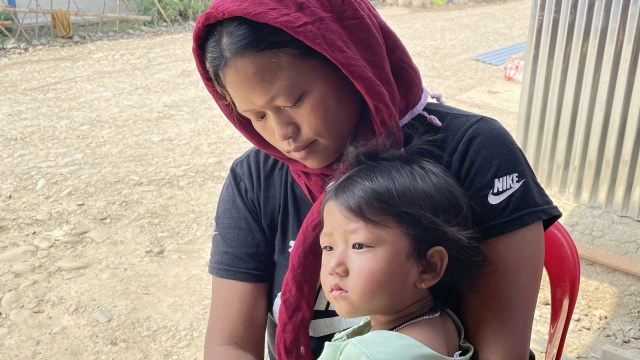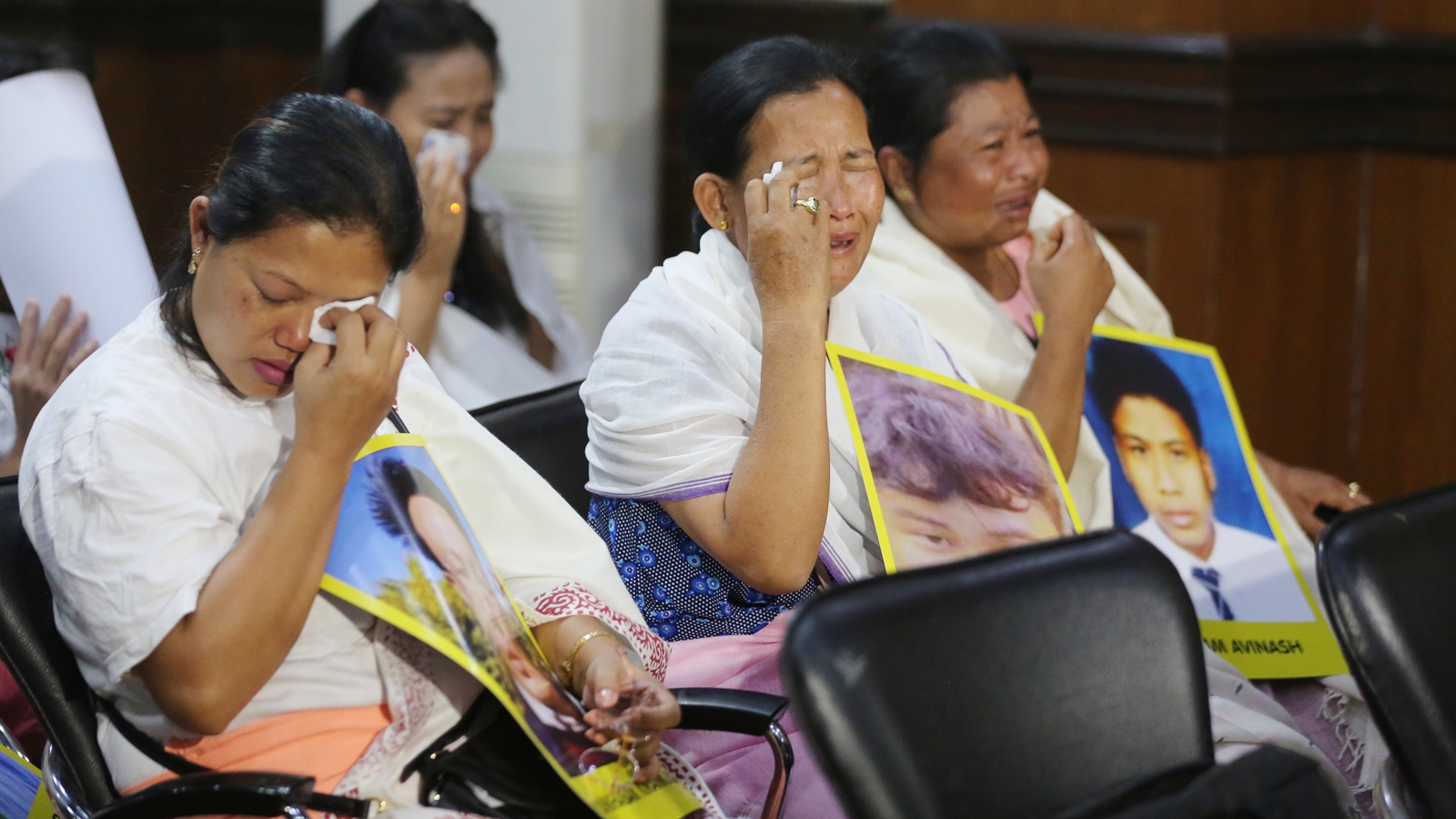A call to observe May 3 as ‘Kuki-Zo Awakening Day’, a ‘condolence service’ in Churachandpur, a meeting on ‘365 days of Chin-Kuki Narco Terrorist Aggression’ in Imphal — different groups in Manipur will mark one year of ethnic conflict in the state in different ways Friday, a reminder of just how deep the faultlines still remain.

More than 1,500 people have been injured, around 60,000 people displaced within the state itself, and at least 13,247 structures have been gutted or destroyed. At least 28 people continue to be missing or presumed kidnapped or murdered.
 Family members of missing Meiteis at a press conference in New Delhi on Thursday. (Express photo by Tashi Tobgyal)
Family members of missing Meiteis at a press conference in New Delhi on Thursday. (Express photo by Tashi Tobgyal)
Within the first week of the conflict, after widescale violence and arson, a mass “exchange of population” was carried out by security forces. Meiteis living in Kuki-Zomi majority areas such as Churachandpur, Kangpokpi and Moreh were transported to the Meitei-majority valley. Kuki-Zomis in Imphal and other Meitei-majority areas were taken to Churachandpur and Kangpokpi, while many also fled the state to neighbouring Mizoram or elsewhere in the country.
However, in the early days, some still remained — for instance, 24 Kuki-Zomis continued to live in New Lambulane, guarding their homes amidst security deployment, and around 400 Meiteis from the border town Moreh sought shelter in neighbouring Myanmar. These “people who stayed back” have since been moved to areas where their community is in majority. This social and demographic divide has continued to fester, and the predominant sites of the continuing conflict are “foothill” areas where Meitei-majority valley regions meet Kuki-Zomi majority hill areas.
A senior police officer told The Indian Express that “the level of violence has come down and the spread has come down too” over time. In fact, there was a notable absence in incidents of violence for around 40 days. However, since April 13, there has again been a spate of violent incidents, with the killing and mutilation of two men in Kangpokpi district and the killing of two CRPF personnel in a brazen attack on a CRPF outpost in Bishnupur district.
 At least 28 people continue to be missing or presumed kidnapped or murdered.
At least 28 people continue to be missing or presumed kidnapped or murdered.
These CRPF personnel are among at least 16 central security and state police personnel who have been killed in the violence over the past year, both while on and off duty. The conflict has also been defined by suspicion and hostility towards security personnel – specifically, allegations of bias levelled by Meitei stakeholders against the Assam Rifles; and similar allegations by Kuki-Zomis against Manipur police commandos.
Story continues below this ad
From a law-and-order perspective, the biggest challenge remains the prevalence of looted arms among civilians on both sides of the divide. A police officer estimated that while around 2,000 weapons seized from security establishments during the course of the conflict have been recovered, another 4,000 continue to be in the hands of civilians.
However, the officer emphasised that “security is just part of the solution”. Referring to the legitimacy that non-state actors such as armed miscreants and cadres of militant groups currently have in the state, he said, “The solution has to come from dialogue by public representatives… Without talks, these people will continue to have legitimacy. The public needs to understand that there is no point in submitting to these activities. We can tackle them (armed miscreants) but if the public comes in between and we deploy full force, there will be huge losses in the civilian population.” The officer pointed to an incident earlier this week in which large numbers of women freed 11 men detained by the Army and demanded the return of weapons seized from them.
An Assam Rifles official also underlined the need for “a political solution” to the conflict, while also flagging “misinformation on social media stoking tensions” as an obstacle to law and order.
This dialogue remains elusive, as groups on both sides of the divide continue to claim that only the Central government can offer what they see as “solutions” to the conflict.
Story continues below this ad
Kuki-Zomi groups – along with the 10 Kuki-Zomi MLAs of the Manipur Legislative Assembly – have been claiming since May last year that the only acceptable solution to them is a “separate administration” from the rest of Manipur.
“The Centre has to address our issue knowing very well that we cannot live together under one administration. That is the way forward and we will keep pressing on that, there can be no compromise. It is very clear that the Manipur government will not do anything about it but we will continue to push for our political demand with the central government, while we continue to defend our land,” said Muan Tombing, secretary of the Indigenous Tribal Leaders’ Forum, a Kuki-Zomi organisation based in Churachandpur.
On the other hand, Khuraijam Athouba, spokesperson for COCOMI, an organisation representing Meitei interests, said that the only way forward is for the Centre to take a harder line with Kuki-Zomi insurgent groups and suspend ceasefire settlements with them.
“With the signing of the suspension of operations agreement with the groups in 2008, Kuki militants have been empowered, which has triggered the entire conflict. The conflict will keep lingering till this is addressed,” he said.



 Family members of missing Meiteis at a press conference in New Delhi on Thursday. (Express photo by Tashi Tobgyal)
Family members of missing Meiteis at a press conference in New Delhi on Thursday. (Express photo by Tashi Tobgyal) At least 28 people continue to be missing or presumed kidnapped or murdered.
At least 28 people continue to be missing or presumed kidnapped or murdered.





